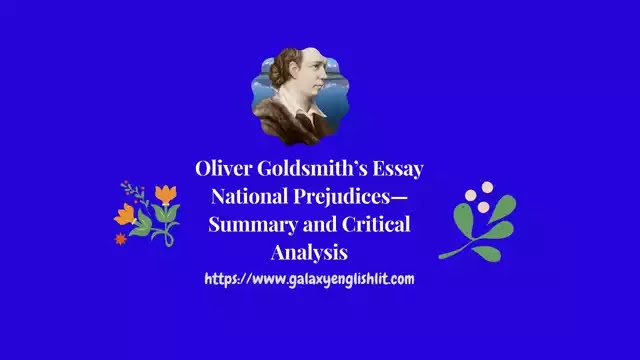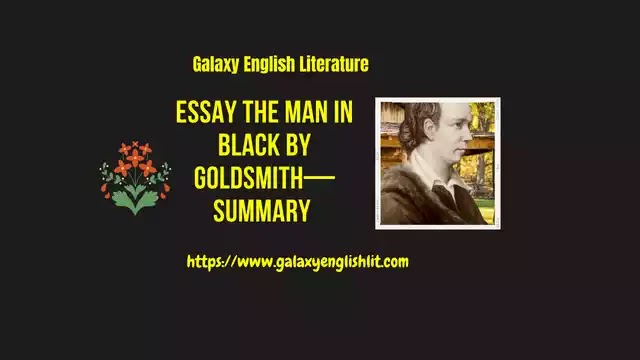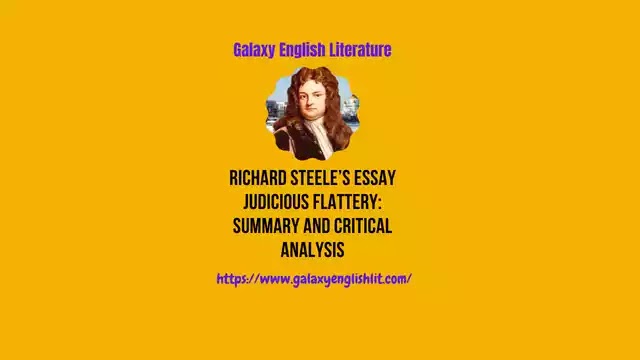Introduction:
T. S. Eliot, an American by birth, became a naturalised British Subject in 1927. His contribution to English poetry has been substantial and solid. Eliot is a difficult poet to understand and his poetry, loaded with the weight of his stupendous learning and subtle allusiveness, baffles an average well informed reader. For him poetry is not a spontaneous overflow of powerful emotions but a difficult out to follow without proper intellectual equipment in the reader. Eliot conceived that a new poet must be difficult, more comprehensive, more allusive, more indirect in order to force to dislocate if necessary, language into his meaning. To make himself inaccessible to popular comprehension Eliot introduced strange symbols and images in his poetry. He made the poetry complex and confusing by calling back to his mind the images and phrases, thoughts and ideas of a thousand authors. His obsession with the problem of time, and his strong desire to realise a vision, both earthly and spiritual, further accentuated the mystifying atmosphere of his poetry.
 |
| T.S. Eliot A Modern Poet |
His Major Poetical Works:
The first great work of T. S. Eliot was Love Song of J. Alfred Prufrock. This poem created a stir in the poetical world of the twenties. The Poems (1980) exhibits the same mood. The much discussed The Waste Land appeared in 1922. In 1925 appeared The Hollow Men representing the dying embers of dying civilization. In Ash - Wednesday (1930) he directed his gaze to religion and spiritual life. The new spiritual change that came over Eliot at this time is reflected in Journey of the Magi commemorating the birth of Christ. Mariana further marks the emergence of Eliot from Waste Land into the land of Beulah with a better hope for mankind. The resurrection of Eliot's faith is represented in Four Quartets appearing separately under Burnt Norton (1936), East Coker (1940), The Dry Salvages (1941), Little Gidding (1942). In these religious poems we become aware of the intensity of Eliot's search for religious truth, which leads finally to a new hope in the Christian idea of rebirth and renewal.
Intellectual Quality of His Poetry:
Eliot's poetry while seeking to appeal to emotions is of an intellectual character. It is written with deliberation and is not the result of spontaneous overflow of powerful feelings. It is loaded with learning and is heavy with thought. The thinker in Eliot overpowers the artist and the poet, and the stamp of a highly subtle and intellectual personality is on every line of the poet. The odour of bookishness is everywhere in Eliot's poetry. Eliot is remembered as one of the greatest renovators of English poetry. He has given it a new sincerity and a new spiritual depth. Like Dryden after the Restoration and Wordsworth at the end of the eighteenth century he has also given it a new policy. More than any other poet he has saved it from becoming a mere past time of the scholarly section of the upper middle class, like Latin poetry in the days of Claudian and Ausonious.
Theme of Eliot's Poems:
The one major theme in the poetry of Eliot is redemption of time and the possibility of spiritual rebirth. Basically, it is not different from the Christian conception of sin, atonement, redemption and spiritual resurrection. It is equally allied to the rationalistic idea of science that nothing material is subject to utter destruction. Everything undergoes a transformation under the influence of time. Eliot saw the illustration of this idea even in the vegetation rituals and fertility rites of primitive cultures and the mystery of religions of the ancient world, from which early Christianity absorbed so much of its own ritual and symbolism. The theme of redemption and rebirth is quite clear in Eliot's poems. In Ash Wednesday, reminiscences of the world of Dante have been pointed out frequently. It has something of the nature of a dream like ‘Vita Nuova’ and in the light of Eliot's later development appears to be a treatise on something related to what is termed as ‘sublimation’. There is a cry heard echoing:
“Redeem
The time, Redeem.
The unread vision in the higher dream.”
In the closing lines of The Journey of the Magi, “I should be glad of another death”, Eliot again suggests his conception of birth as a kind of death. Animula carries on the same theme and the conclusion emphasises again that the hour of birth and of dying may be the same. Burnt Norton is significant in its elaboration of the conception of time and the timelessness of every conception. The Waste Land has a wider theme. It can be studied as a bitter criticism of the hollow and rootless modern civilization. The ravages caused by the world wars form the basic theme of this poem. The background of the poem is desolate Europe after the First World War and its central theme is the disorder, disintegration, agony and frustration of the people after the war.
The Use of Symbols:
Eliot has employed both kinds of symbols traditional and personal. Eliot is called a giant of personal symbolism. Eliot has employed his traditional symbols with reference to concepts of Anglo Catholicism and things and events described in the Bible. For example, in one of his 1920 poems, Eliot writes:
“In the beginning was the word.”
The line is a quotation from the Bible. Here the ‘Word’ stands for God's power of creation identified as Christ. In Ash Wednesday, Eliot has employed the same traditional symbol. Eliot has symbolised the creation of the universe. Another traditional symbol used by Eliot is the Rose. In the Catholic side of Christianity, ‘Rose’ stands for ‘Virgin Mary’ conceived as the motherly affection offering her devotees hope and life. Another traditional symbol used by Eliot is ‘rocks’. In the poem Journey of the Magi, Eliot employs traditional symbols— ‘three trees’ and ‘a white horse’. Eliot's personal symbol is subtle, thought - provoking, and at places, teasing. Here is an example of personal symbol in the poem The Waste Land:
“There is shadow under this red rock,
(Come in under the shadow of this red rock).”
Here the personal symbol is: ‘this red rock’. This symbol stands for Christianity. It represents the Christian religion as a rock - shelter which is red with Christ's blood. Distressed by the philosophy of materialism, Eliot has employed his personal symbolism in The Waste Land:
"Son of man,
You cannot say, or guess, for you know only
A heap of broken images, where the sun beats,
And the dead tree gives no shelter, the cricket no relief:
And the dry stone no sound of water.” (The Waste Land)
Here ‘man’ means ‘Adam’, that is erring man, the materialists, ‘Say’ means ‘describe’. ‘Guess’ means ‘imagine’. ‘Know’ means ‘consider the religion’. ‘A heap of broken images’ is a subtle symbol which symbolises the Christian religion as a ‘ruined church’ with broken images (i.e., concepts) of God, Christ, saints. ‘The Dead Tree’ represents materialism “as a tree which is dead” because it denies the independent existence of the soul and God. ‘The cricket’ is a symbol of Nature.
The Use of Images:
Eliot's images are intended to shock and startle the reader. In Rhapsody on a Windy Night, there is the image of a prostitute standing against the open door; the open door is compared to a grin which is suggestive of the mood of the scene. Similarly, the typist is compared to human engine waiting like a taxi throbbing. Sometimes the images are compressed together as in The Five Sermon or in The Love Song of J. Alfred Prufrock. Sometimes images used are ironic through contrast. For example, “I have measured out my life with coffee spoons.” Similarly there is irony of situation in The Waste Land where the typist girl engages in sex as a routine mechanical recreation— “where lovely woman stoops to folly and puts a record on the gramophone.” Such ironic images heighten the sense of spiritual barrenness and decay. There are picture images of people or objects at a particular moment of time or action. Such are the images as Madame Sosostris, the fortune teller; there is Mr. Eugenides, the fun - loving merchant and typist girl.
The Use of Irony:
Eliot uses a good deal of irony in The Love Song of J. Alfred Prufrock. The very title is ironical. There is no love song on a proposal to his lady. In fact he is coward who wants excuses for his indecision in matter of love. Similarly, in A Game of Chess, voluptuousness of the lady has been described with an extravagant suggestion of Cleopatra's splendour and majesty. But the word ‘synthetic’ changes the entire meaning. There is ironic contrast in The Waste Land, as for example the contrast between sexy typist and lady in The Vicar of Wakefield.
Eliot's Classicism:
Eliot indulges in trivialities. He has pointed out the difference between the romantic school and the classical school. While the classical poetry is complete, mature, orderly, the romantic poetry is fragmentary, immature, and chaotic. This indicates that Eliot has accepted the formula of completeness and formal perfection of the classical poetry. There is a deep similarity between Eliot's poetry and the Augustan poetry.
Eliot has stressed the importance of order and discipline of authority and tradition, and of organisation and pattern of the Augustan poets. Eliot's images are clear - cut, concrete and precise. He draws his symbols from traditional sources. He does not alter their original significance. His approach to symbol and imagery is classical. His poetry reveals economy of classical school.
Style and Diction:
Eliot was a great reformer of the English language. He was a conscious and painstaking artist. His ideals were based upon classical dogmas. He followed the foot - steps of Horace and Virgil who used to revise their verses constantly. He mixes unexpected and common place phrases and words which immediately startle and surprise the reader. The Love Song of J. Alfred Prufrock has a direct, straightforward and colloquial opening. Similarly, in Gerontion, he is straightforward and conversational throughout. In The Waste Land the style is very straightforward as the poet uses the phrase Unreal City in the beginning of the passage. His variety of diction can be noted by the use of phrases and images taken from the sordid realities of every - day urban life. He has acquired that variety of diction, that union of the poetic and the prosaic, of the common world and the formal, the colloquial and the remote, the precise and the suggestive which is the achievement of a great order. There is a dramatic element in Eliot's style. Sometimes he varies his style with parody. A Game of Chess opens with as direct parody of a famous passage in Antony and Cleopatra. His use of language is characterised by economy, precision, variety, and appropriateness. Eliot reacted against the traditional rhyme scheme, particularly the iambic measure, because he wanted to make it flexible enough to explain the complexities of modern mind and the conflict of ideas.





